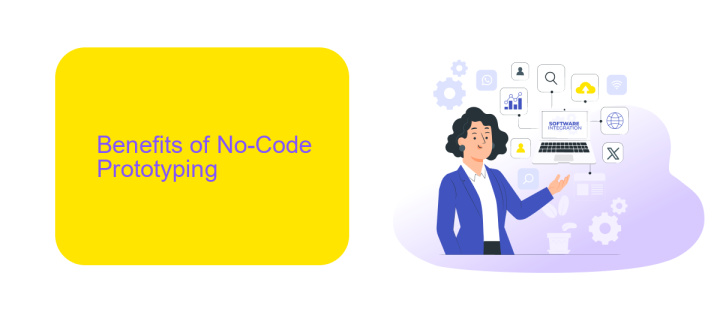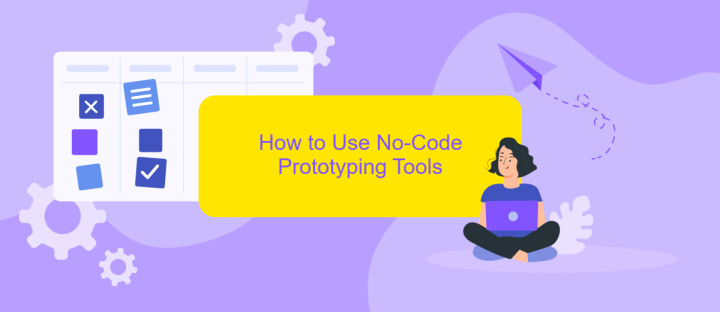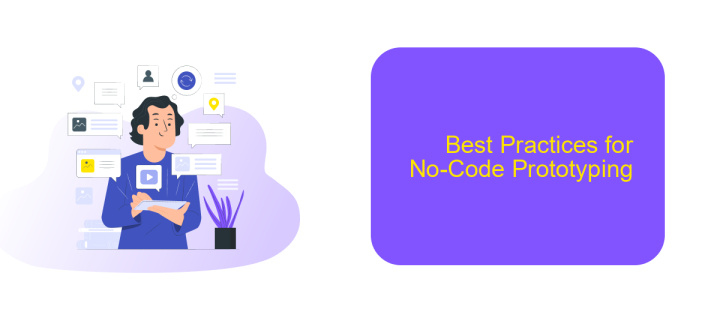No-Code Prototyping
No-code prototyping has revolutionized the way we approach product development, enabling designers and entrepreneurs to bring their ideas to life without writing a single line of code. This powerful approach democratizes innovation, making it accessible to a broader audience and accelerating the development process. In this article, we'll explore the benefits, tools, and best practices for no-code prototyping.
Introduction: Understanding No-Code Prototyping
No-code prototyping is revolutionizing the way individuals and teams approach the development of digital products. By eliminating the need for extensive coding knowledge, no-code tools empower users to quickly create functional prototypes, facilitating faster iteration and more efficient feedback loops. This approach is particularly beneficial for startups, small businesses, and non-technical stakeholders who need to validate their ideas without investing significant resources in development.
- Speed: Rapidly create and iterate on prototypes.
- Accessibility: No coding skills required, making it easy for anyone to use.
- Cost-effective: Reduces the need for expensive development resources.
- Integration: Easily integrate with various tools and services like ApiX-Drive to streamline workflows.
Incorporating no-code prototyping into your workflow can significantly enhance productivity and innovation. Tools like ApiX-Drive enable seamless integration with other platforms, automating data transfer and ensuring that your prototypes are both functional and connected. As a result, teams can focus more on refining their ideas and less on the technical complexities, ultimately leading to better, more user-centric products.
Benefits of No-Code Prototyping

No-code prototyping offers significant advantages for both novice and experienced developers. One of the primary benefits is the speed at which prototypes can be created. Traditional coding methods often require extensive time and resources, but no-code platforms allow for rapid development. This accelerated process enables teams to iterate quickly, test ideas, and gather feedback without the need for extensive coding knowledge. As a result, businesses can bring products to market faster and adapt to changes more efficiently.
Another key benefit is the accessibility of no-code tools. These platforms democratize the development process, allowing individuals without technical backgrounds to participate in prototyping. This inclusivity fosters greater collaboration among team members from diverse disciplines. Additionally, many no-code tools offer seamless integration capabilities with other services, such as ApiX-Drive, which simplifies the automation of workflows and data synchronization across various applications. This ease of integration ensures that prototypes are not only functional but also scalable and ready for real-world deployment.
How to Use No-Code Prototyping Tools

No-code prototyping tools offer an efficient way to create interactive prototypes without writing any code. These tools empower designers and non-technical users to bring their ideas to life quickly and easily. Here's a step-by-step guide to using no-code prototyping tools:
- Choose a tool: Select a no-code prototyping tool that suits your needs. Popular options include Figma, Adobe XD, and InVision.
- Set up your project: Create a new project and define your project's scope. Import any necessary assets or design elements.
- Design your prototype: Use the tool's drag-and-drop interface to design your prototype. Add buttons, images, and other interactive elements.
- Integrate with other services: Use tools like ApiX-Drive to connect your prototype with other apps and services, ensuring seamless data flow.
- Test and iterate: Preview your prototype and gather feedback. Make necessary adjustments based on user input.
- Share your prototype: Once satisfied, share your prototype with stakeholders or team members for further review and collaboration.
Using no-code prototyping tools can significantly speed up the design process, allowing you to focus on creativity and user experience. By integrating with services like ApiX-Drive, you can enhance your prototype's functionality and streamline your workflow.
Best Practices for No-Code Prototyping

No-code prototyping has revolutionized the way we approach product development, making it accessible to a broader audience. To maximize its potential, it is essential to follow best practices that ensure efficiency and effectiveness.
Firstly, start with a clear vision of what you want to achieve. Define your objectives, target audience, and key features. This will guide your prototyping process and keep you focused on your goals.
- Keep it simple: Focus on core functionalities and avoid unnecessary complexity.
- Iterate rapidly: Use the no-code tools to quickly test and refine your ideas.
- Utilize integrations: Leverage services like ApiX-Drive to connect different tools and automate workflows.
- Gather feedback: Share your prototype with stakeholders and users to get valuable insights.
Lastly, document your process. Keeping a record of your iterations, feedback, and changes will help you track progress and make informed decisions. By adhering to these best practices, you can create effective prototypes that meet your goals and enhance your product development process.
- Automate the work of an online store or landing
- Empower through integration
- Don't spend money on programmers and integrators
- Save time by automating routine tasks
Conclusion: Exploring the Future of No-Code Prototyping
No-code prototyping has revolutionized the way we approach product development by democratizing the tools needed to bring ideas to life. As technology continues to evolve, the future of no-code prototyping looks promising, with more sophisticated tools and platforms emerging. These advancements will not only make the process faster and more efficient but also more accessible to people with varying levels of technical expertise.
One exciting aspect of this evolution is the integration capabilities with other services. Platforms like ApiX-Drive are at the forefront, enabling seamless connections between various applications without the need for coding. This allows for more dynamic and interactive prototypes that can be tested and iterated upon in real-time. As we move forward, the synergy between no-code tools and integration services will likely lead to even more innovative and user-friendly solutions, making the future of no-code prototyping both bright and boundless.
FAQ
What is No-Code Prototyping?
Who can benefit from No-Code Prototyping?
What tools are commonly used for No-Code Prototyping?
How can I integrate and automate tasks in my No-Code prototype?
What are the limitations of No-Code Prototyping?
Do you want to achieve your goals in business, career and life faster and better? Do it with ApiX-Drive – a tool that will remove a significant part of the routine from workflows and free up additional time to achieve your goals. Test the capabilities of Apix-Drive for free – see for yourself the effectiveness of the tool.


